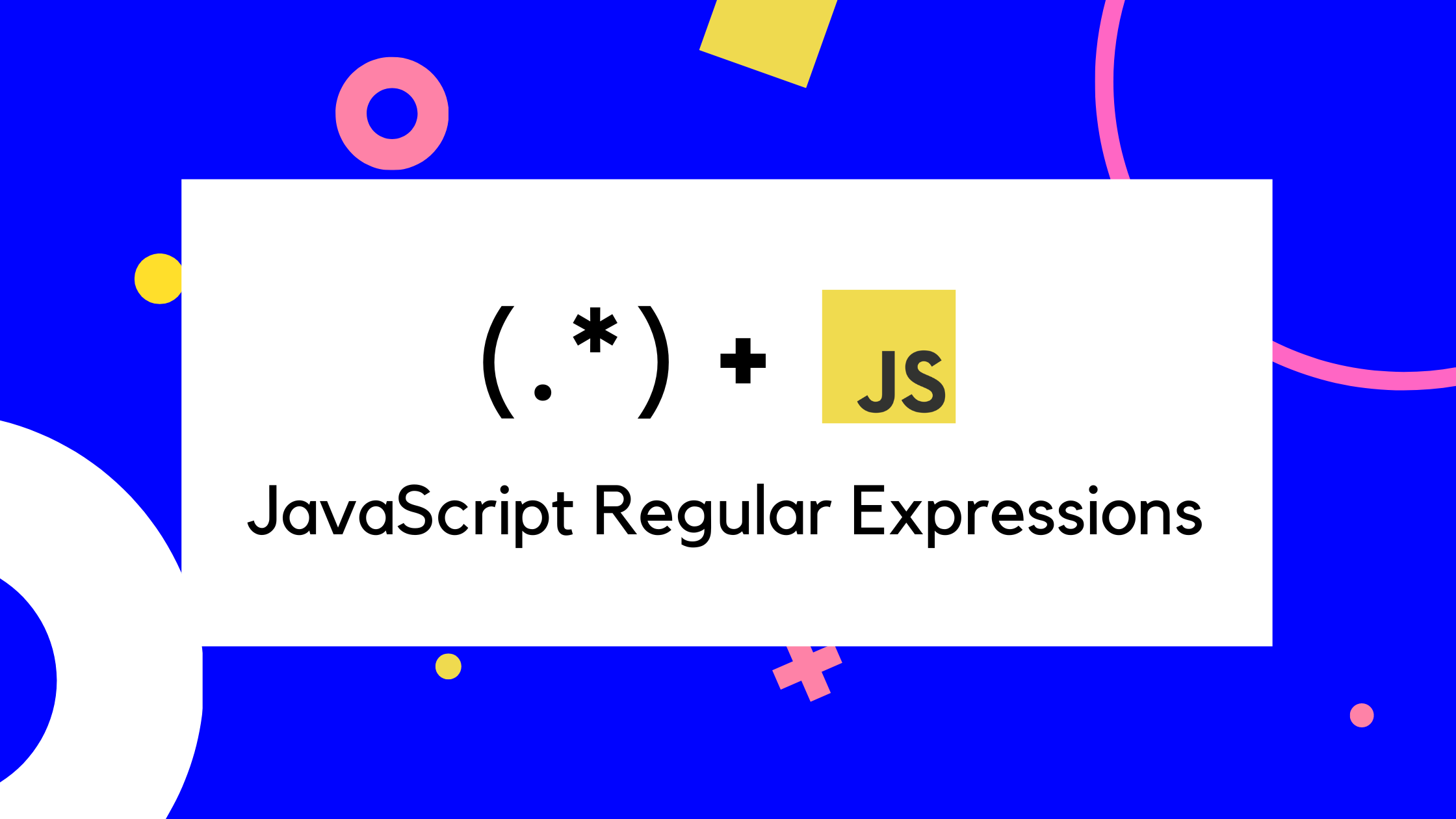Pattern Matching with JavaScript Regular Expressions: An Introduction
 Oluwatobi Oluyede
Oluwatobi Oluyede
In the intricate world of web development, the mastery of Regular Expressions opens the door to a world of powerful pattern matching. From validating user input to searching and manipulating strings, regular expressions serve as the linchpin for crafting precise patterns within text data.
This introductory article marks the start of a series dedicated to unraveling the nuances of JavaScript Regular Expressions, delving into their fundamental components, and guiding you through practical applications that showcase the versatility of pattern matching in the JavaScript landscape.
As we embark on this journey, we'll explore the foundational elements of regular expressions, understanding how literal characters, character classes, quantifiers, and anchors form the building blocks of intricate patterns.
Now, let's dive into the fascinating realm of pattern matching to equip you with the knowledge to wield regular expressions with finesse and address a myriad of text-related challenges.
Pattern Matching with JavaScript Regular Expressions
Regular Expressions (RegEx, or sometimes, RegExp) remain a powerful and concise way to describe and match patterns within strings.
For instance, in the context of form validation, RegEx acts as a digital gatekeeper, enabling developers to define specific patterns that user input must follow. This pattern-matching capability is invaluable for validating data formats such as email addresses, phone numbers, dates, passwords, etc., using sequences of characters.
In JavaScript, you can use the built-in RegExp object or regex literal notation (enclosed in forward slashes) to create regular expressions. In this series, we will cover how you can implement basic client-side pattern matching using JavaScript Regular Expressions.
Onward and forward!
Working with the test() and match() Methods
The test() method of the JavaScript RegExp regular expression) object is used to test whether a given string matches the regular expression pattern. The method returns a Boolean value: true if there is a match, and false otherwise.
Here's the basic syntax of the test() method (read more about it here):
regex.test(str);
regex: The regular expression object.str: The string to test against the regular expression.
Here's a simple example to illustrate how it works:
const regex = /tobi/;
const inputText = "Hello, Tobi!";
const isMatch = regex.test(inputText);
console.log(isMatch); // Output: false
In this example, the regular expression /tobi/ is used to test if the string "Hello, Tobi!" contains the substring "tobi".
Now you might be wondering, "Well it does, so why's it false?" This is because the default regex is case-sensitive, so the test() method returns false. We'll see how to match case-insensitive patterns when we look at modifiers in the coming section.
You can use the test() method in conditions or assignments to check for matches and take appropriate actions in your code. It's commonly used in scenarios like form validation, where you want to verify if user input conforms to a certain pattern. (Again, more on this later.)
Now, let's look at the match() method.
str.match(regex) // Kind of like test() but reversed🌞
The match() method of the JavaScript String object, when applied to a string, uses regular expressions to search for matches within that string. It returns an array of matches against the expression, or null if no matches are found.
Here's how it works:
const inputString = "Hello, world! This is a test.";
const regex = /[aeiou]/g;
const matchArray = inputString.match(regex);
console.log(matchArray); // Output: ["e", "o", "o", "i", "i", "a", "e"]
In this example:
matchArray: The array of matches returned by thematchmethod.
Remember that if the global (g) modifier is used in the regular expression, the match method returns an array containing all matches found. Without the global modifier, it returns an array containing the first match and additional properties like the zero-based index of the whole match and the original string parsed.
Understanding the match() method is crucial for extracting specific information from matches, especially when dealing with complex patterns or when you need more than a simple boolean indication of a match. You can read more about match() in the MDN Docs.
Let's now delve into the basic building blocks of Regular Expressions.
Basic RegEx Components
Here are some basic RegEx components:
1. Literal Characters
These are characters that match themselves. For example, the RegEx /hello/ would match the string "hello" in the input.
const inputText = "hello";
const regexLiteral = /hello/;
const isMatchLiteral = regexLiteral.test(inputText);
console.log("Literal Characters Match:", isMatchLiteral); // Output: true
In this example, the regular expression /hello/ will match the exact string "hello".
2. Character Classes
Square brackets [ ] define a character class, allowing you to specify a set of characters that can match at a particular position. For instance, /[aeiou]/ would match any vowel.
const inputText = "a";
const edgeText = "b";
const regexVowel = /[aeiou]/;
const isMatchVowel = regexVowel.test(inputText);
const isNotMatchVowel = regexVowel.test(edgeText);
console.log("Character Classes Match:", isMatchVowel); // Output: true
console.log("Character Classes Match:", isNotMatchVowel); // Output: false
The regular expression [aeiou] matches any single vowel. You can modify the inputText variable to test other vowels. In the edgeText variable, the expression doesn't quite match since we have a consonant, not a vowel.
3. Quantifiers
Quantifiers specify how many occurrences of a character or group are required. For example, + means "one or more," and * means "zero or more".
const inputTextDigits = "12345.6789";
const regexDigits = /\d*/;
const isMatchDigits = regexDigits.test(inputTextDigits);
console.log("Quantifiers Match:", isMatchDigits); // Output: true
So, /d*/ would match any sequence of digits, including an empty string. Be careful using this if you're trying to match one or more digits (use /d+/ instead).
4. Anchors
Anchors specify the position in the string where a match must occur. ^ represents the start of a line, and $ represents the end. So, /^start/ would match if the string starts with "start".
const inputStart = "start with me";
const inputNotStart = "not started yet";
const regexStart = /^start/;
const isMatchStart = regexStart.test(inputStart);
const isNotMatchStart = regexStart.test(inputNotStart);
console.log("Anchors Match:", isMatchStart); // Output: true
console.log("Anchors Match:", isNotMatchStart); // Output: false
Modifiers (Optional)
Modifiers are optional flags that can be added outside the regular expression literal to alter the behavior of the pattern matching:
i(ignore-case):/pattern/imakes the pattern-matching case insensitive.g(global):/pattern/gsearches for all occurrences of the pattern in the input.m(multiline):/pattern/menables matching the start and end of lines in a multi-line string.
Modifiers, while essential for certain scenarios, don't fundamentally define the pattern structure. They provide additional control over how the pattern is applied.
Let's explore the differences between the i, g, and m modifiers with a simple code example. For this example, let's consider a scenario where we want to match all occurrences of the word "apple" in a case-insensitive manner and across multiple lines.
const text = `
Apples are delicious.
I have an Apple tree.
A ripe apple is red.
`;
// Using the 'i' modifier for case-insensitivity
const caseInsensitiveRegex = /apple/gi;
const caseInsensitiveMatches = text.match(caseInsensitiveRegex);
console.log("Case-insensitive matches:", caseInsensitiveMatches);
// Output: Case-insensitive matches: [ 'Apple', 'Apple', 'apple' ]
// Using the 'g' modifier for global matching
const globalRegex = /apple/g;
const globalMatches = text.match(globalRegex);
console.log("Global matches:", globalMatches);
// Output: Global matches: [ 'apple' ]
// Using the 'm' modifier for multiline matching
const multilineRegex = /^A/gm;
const multilineMatches = text.match(multilineRegex);
console.log("Multiline matches:", multilineMatches);
// Output: Multiline matches: [ 'A', 'A' ]
In this example:
Case-insensitive (
i) Modifier: Theimodifier allows the regular expression to match regardless of the case. In thecaseInsensitiveRegex, it matches both uppercase and lowercase occurrences of "apple".Global (
g) Modifier: Thegmodifier enables global matching, meaning it finds all case-sensitive occurrences of the pattern in the input text. In theglobalRegex, it finds all occurrences of "apple".Multiline (
m) Modifier: Themmodifier is used for multiline matching. In themultilineRegex, it matches lines that start with the letter 'A' (anchored to the beginning of a line using^), thanks to the multiline modifier.
Here, the combination of modifiers provides flexibility in pattern matching, allowing for case-insensitive, global, and multiline matching based on the specific requirements of the regular expression.
The next article will focus on some basic code implementations of regular expressions, and then we'll wrap up the series with an in-depth look at form validation on the client side using JavaScript Regular Expressions.
Closing Thoughts
Understanding the intricacies of regular expressions is key to mastering data validation and creating a more secure and user-friendly experience for your users.
By implementing real-time validation and leveraging the pattern-matching capabilities of regular expressions, JavaScript enables developers to sanitize and validate data to meet the required criteria and enhance the overall user experience.
In the coming parts of our Regular Expressions series, we will explore these concepts through practical implementations. We'll also explore best practices for using regular expressions in JavaScript to implement effective form validation.
Follow Bits and 'Bites' and subscribe to my newsletter to be notified when the next article drops!👋
Subscribe to my newsletter
Read articles from Oluwatobi Oluyede directly inside your inbox. Subscribe to the newsletter, and don't miss out.
Written by
